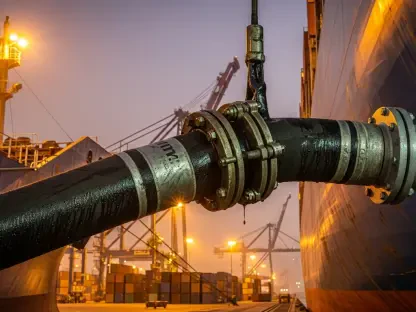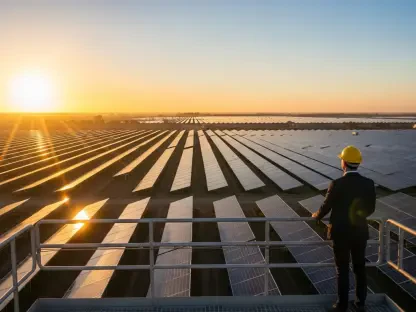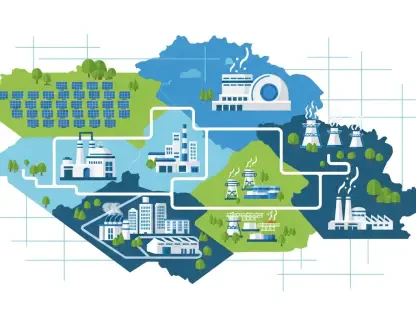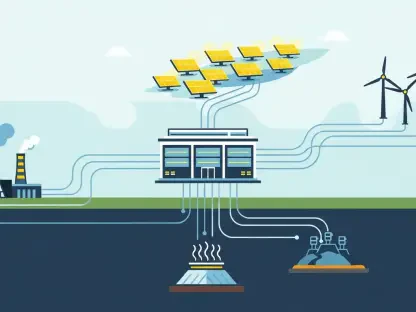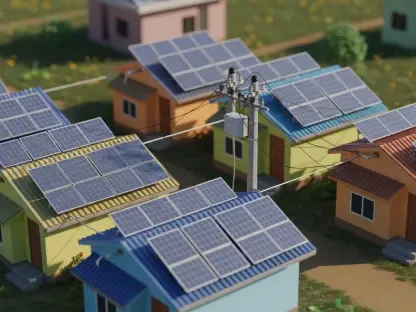With a wealth of experience in energy management, renewable energy, and electricity delivery, Christopher Hailstone is at the forefront of advancing grid reliability and security. In this insightful conversation, we explore Lydian Energy’s latest ventures in Texas, their strategic focus on battery storage, and how these initiatives contribute to the rapidly evolving landscape of energy infrastructure.
Can you provide an overview of Lydian Energy’s recent projects in Texas?
Absolutely, Lydian Energy is focusing on three major battery storage projects in Texas, which are set to bring 550 megawatts of energy storage capacity online this year. These projects are crucial in supporting the region’s energy demands and enhancing the reliability of power systems. Each project has been meticulously planned to deliver robust energy solutions that align with our commitment to sustainable development.
What motivated Lydian Energy to focus on battery storage projects in Texas?
Texas presents a unique combination of a robust energy market and a pressing need for reliable infrastructure. The state has been at the forefront of renewable energy adoption, and battery storage is a natural next step to ensure that energy generated from renewable sources can be efficiently stored and utilized. The rapid growth and strategic importance of the ERCOT market make Texas an ideal location for these projects.
How did Lydian Energy secure the $233 million in financing for these projects?
Securing this level of financing required a strategic alignment between various stakeholders. We collaborated closely with financial institutions that share our vision for enhancing energy infrastructure. This involved structuring bespoke financial packages that leveraged both tax credit bridge financing from banks and co-investment capital from Excelsior Energy Capital’s Fund II.
What roles did ING and KeyBank play in the financing for your projects?
Both ING and KeyBank played pivotal roles. ING provided the financial backing necessary for the Pintail and Crane projects, amounting to $139 million in investment, while KeyBank structured and provided a $94 million financing package for the Headcamp project. Their involvement highlights the institutional confidence in what we are achieving with these battery storage facilities.
Can you elaborate on the specific projects, like Pintail, Crane, and Headcamp, and their capacities?
Certainly. The Pintail and Crane projects, located in San Patricio and Crane Counties, are each designed as 200 MW/400 MWh systems, indicative of their substantial capacity to store and distribute energy. The Headcamp project, on the other hand, is a 150 MW/300 MWh system situated in Pecos County. These projects together form a crucial part of our strategy to bolster energy storage capabilities in Texas.
What is the expected timeline for these projects to go online?
We are on track to have all three projects operational by the fourth quarter of this year. This timeline is a reflection of our team’s commitment to meeting ambitious targets without compromising on the quality or integrity of the energy solutions we provide.
How does Excelsior Energy Capital’s Fund II factor into these developments?
Excelsior Energy Capital’s Fund II has been instrumental in fueling these projects. The fund represents a $1 billion pool closed in April, which helps facilitate the co-investment capital critical for our current developments. It signifies not just financial support but a partnership in achieving sustainable energy infrastructure goals.
What are the advantages of having co-investment capital from Excelsior’s Fund II limited partners?
Co-investment capital provides us with the flexibility and resilience needed to weather potential financial challenges while maintaining momentum in project development. It enhances our capacity to deploy resources efficiently and seize strategic opportunities as the market evolves.
Is Lydian Energy planning to expand its portfolio beyond the current 20 projects and 4.7 GW?
Expansion is certainly on the horizon for Lydian Energy. We are consistently evaluating new opportunities to grow our portfolio in line with our long-term vision for pioneering renewable energy solutions. Our ongoing projects represent just the beginning of our potential impact in the energy sector.
What does the surge in energy storage development mean for the ERCOT market?
This surge reflects an increased awareness of the importance of reliable energy storage systems. For the ERCOT market, it means enhanced grid stability and a reinforcement of efforts to meet growing energy demands with sustainable resources. Our projects are contributing directly to this pivotal market evolution.
How does ERCOT’s expected increase in storage capacity impact Lydian’s strategy?
ERCOT’s plans to dramatically boost its storage capacity align perfectly with our strategic objectives. It underscores a shared vision for how battery storage can effectively integrate with existing energy systems, creating a more resilient and efficient market overall.
Could you explain how institutional confidence in battery storage as a strategic asset class is growing?
Battery storage is increasingly seen as a reliable and necessary component of modern energy infrastructure. As the sector demonstrates its viability and potential returns, institutional confidence is growing. This confidence translates into increased investment and supports the aggressive development timelines we’ve set.
How do the current financial commitments reflect the demand for reliable energy infrastructure in the U.S.?
These commitments are a clear indicator that there is a strong and growing demand for dependable energy solutions. As more regions face challenges with power reliability, the investment in energy storage provides a safeguard against volatility and helps stabilize the broader energy infrastructure.
Are there any additional financing plans in place for future projects this year?
We are actively pursuing further financing solutions to support additional projects scheduled to begin construction later this year. Our collaboration with financial partners continues to evolve, making future ventures not just possible but well-prepared for launch.
How has Lydian Energy’s partnership with Excelsior Energy Capital influenced its growth and project development?
The partnership with Excelsior Energy Capital has been transformative, providing not only financial resources but strategic guidance that aligns with our mission. This synergy has accelerated our growth trajectory and broadened our capacity to deliver impactful energy solutions.
What challenges does Lydian face in implementing these projects, and how are they being addressed?
One challenge is ensuring that we align with regulatory requirements and community expectations. We are addressing these through proactive engagement and transparent communication. Additionally, technical challenges related to project integration into the existing grid are managed through innovative engineering solutions and best practices.
How does Lydian Energy view its role in the broader renewable energy market in the U.S.?
We see ourselves as pioneers and facilitators of the transition to more sustainable energy. Our role involves pushing the boundaries of what’s possible with battery storage and renewable energy, ensuring we contribute positively to the energy landscape and pave the way for future innovation.
What technological or strategic innovations is Lydian incorporating into its storage projects?
We are integrating advanced energy management systems and leveraging cutting-edge technology to optimize storage efficiency and performance. Our strategic innovation includes not just adopting new technology but also rethinking how these projects can interact together to maximize their overall impact on the grid.
What is your forecast for the future of energy storage in the U.S.?
I foresee continued growth and evolution in the energy storage sector, driven by technological advancements and increasing investment from both private and public sectors. As the demand for clean energy alternatives rises, energy storage will become an even more integral part of the national energy strategy, ensuring a more sustainable and resilient power supply.


